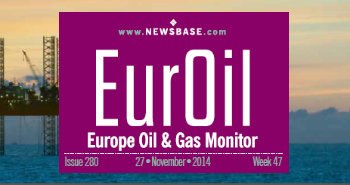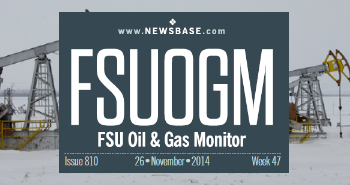Gazprom gas sales to Europe slump to 50-year low

Gazprom’s natural gas deliveries to Europe have plummeted to their lowest levels since the 1970s, further diminishing what was once one of the Kremlin’s biggest revenue streams and compounding the Russian government’s broader problems with revenue amid falling oil prices, a stronger ruble and tightening Western sanctions.
Gazprom exported just 9.93bn cubic metres (bcm) of gas to European customers in the first seven months of 2025, The Moscow Times reported on August 4, down nearly 46% from the 18.3 bcm shipped over the same period last year. The dramatic drop follows the complete loss of transit capacity through Ukraine, combined with the limited throughput of TurkStream — now the sole operational pipeline supplying Russian gas to the EU.
Analysts expect Gazprom to deliver no more than 17 bcm to Europe this year if current trends persist, a stark contrast to the 170-180 bcm it exported annually prior to 2019.
The closure of the Ukrainian route, which could previously carry over 140 bcm annually, has left TurkStream unable to compensate, despite a modest 7% year-on-year rise in its export volumes. The result has been a sharp contraction in Gazprom’s production. Russia’s Federal State Statistics Service reported a 3.2% year-on-year fall in national gas output in the first half of 2025, alongside a 5.2% decline in LNG production.
Gazprom produced 416.19 bcm of gas in 2024, but sold just 355.23 bcm, leaving the company with around 60 bcm of unsold supply. Since Ukraine halted Russian gas transit on January 1, its pipeline network has operated in non-transit mode.
The export collapse is feeding into wider fiscal difficulties for the Russian state. The Finance Ministry said oil and gas revenues fell for the third consecutive month in July, with the budget collecting RUB787.3bn ($9.84bn) in oil and gas taxes – down 28% from the same month a year earlier.
Over the January-July period, total oil and gas receipts dropped 19% year-on-year to RUB5.52 trillion ($69bn), compared with RUB6.78 trillion ($84.71bn) in 2024. Mineral extraction tax, a cornerstone of hydrocarbon income, plunged 38% to RUB634.1bn ($7.93bn). Of this, oil companies paid RUB543.4 billion ($6.79bn), down 36% year on year.
Gas-related tax receipts more than halved, collapsing 53% to just RUB51.1bn ($639mn), underscoring the impact of Gazprom’s export woes.
The Finance Ministry originally projected 2025 oil and gas revenues at RUB10.94 trillion ($136.75bn), including RUB1.8 trillion ($22.5bn) in transfers to the National Wealth Fund (NWF). However, the outlook has since been revised down by nearly a quarter to 8.32 trillion roubles ($104bn), due to weaker oil benchmarks and currency effects.
This downgrade will require continued withdrawals from the NWF, whose liquid assets have fallen nearly threefold since the war began. As of June, the fund’s liquid reserves stood at just over RUB4 trillion ($50bn).
Additional fiscal strain comes from the EU’s 18th sanctions package, which has replaced the fixed $60-per-barrel price cap on Russian oil with a floating benchmark set 15% below global market prices. The new mechanism began with an initial cap of $47.60 per barrel, with revisions scheduled quarterly.
Freedom Finance Global analyst Vladimir Chernov estimated the revised cap could cost Moscow up to RUB1.5 trillion roubles ($18.75bn) annually — roughly 18% of the ministry’s revised RUB8.9 trillion ($111.25bn) target for oil and gas revenue, The Moscow Times reported.
“This measure could place significant pressure on Russia’s economy, particularly federal revenues,” Chernov said. “Risks are heightened by the country’s continued dependence on resource-based income and its exports to jurisdictions where the price cap could be enforced through restrictions on insurance, logistics and payments.”
Russia’s federal budget deficit reached RUB3.7 trillion ($46.3bn) in the first half of 2025. In response, Federation Council Budget Committee Chair Anatoly Artamonov announced in late July that the government aimed to slash RUB2 trillion ($25bn) in “ineffective” spending to reallocate funds towards defence and security.



Follow us online